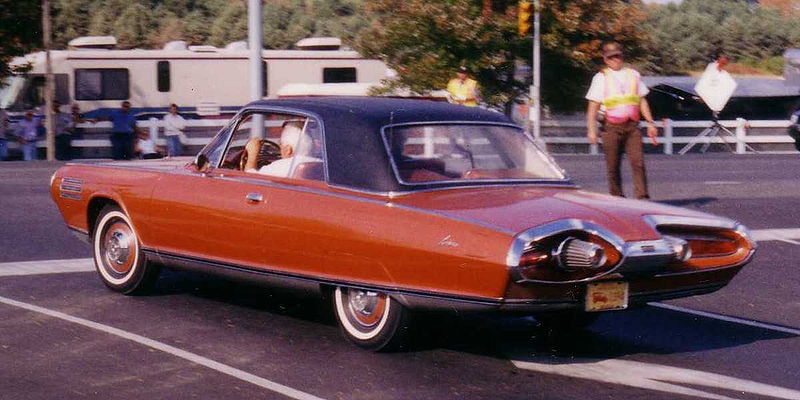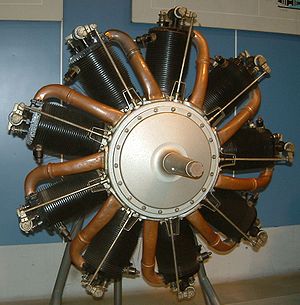|
|

|
Porsche, and the Porsche crest are registered trademarks of Dr. Ing. h.c. F. Porsche AG.
This site is not affiliated with Porsche in any way. Its only purpose is to provide an online forum for car enthusiasts. All other trademarks are property of their respective owners. |
|
|
| thelogo |
 May 4 2011, 01:04 PM May 4 2011, 01:04 PM
Post
#1
|
|
Senior Member    Group: Retired Members Posts: 1,510 Joined: 6-April 10 Member No.: 11,572 Region Association: None |
http://en.wikipedia.org/wiki/File:1963_Chr..._Hershey_PA.JPG
what are the technical hurdle's involved in turbine automobiles , i know tanks can be turbine powered and i'm sure torque is abundant but milage is poor . Also , Rotary Radial anyone , never even heard of this until yesterday . not a rotary or a radial , but a engine where the whole engine spins ??? some body explain that to me . http://en.wikipedia.org/wiki/Rotary_engine Attached image(s)  
|
  |
Replies
| Dave_Darling |
 May 4 2011, 09:00 PM May 4 2011, 09:00 PM
Post
#2
|
|
914 Idiot                Group: Members Posts: 15,204 Joined: 9-January 03 From: Silicon Valley / Kailua-Kona Member No.: 121 Region Association: Northern California 
|
Turbines: Low torque, spin to the moon. Kinda like a Wankel on steroids that way. They spin tens of thousands of RPM or better.
They do not like to change speeds, so a direct connection to the drive wheels will not accelerate that well, at least at first, but the top end will be phenomenal. They burn massive amounts of fuel. The rotary was an interesting engine. The prop was bolted to the crankcase, while the crankshaft was bolted to the airframe. The whole thing spun together. It allowed the engine to be much lighter, because the whole thing served as a flywheel. (Early engines often needed weighty flywheels because they ran unevenly and pretty rough.) They had a very odd intake system; I think the fuel was fed into the crankcase through the crankshaft. It went into and then out of the cylinders (through the piston??), then back in again where it was burned. The exhaust valve was on the "head". It was pretty inefficient, but relatively lightweight because as mentioned it didn't need a flywheel. It used a total-loss oiling system, where oil went in and got whirled around with the gas and air in the case, and eventually was expelled out the exhaust. It was castor bean oil, and it gave the pilots the screaming s**ts because they wound up ingesting it. One of the most famous early rotaries was the Gnome Monosoupape. Soupape is the French word for valve, so it was the "one valve" because the exhaust valve was the only visible one. http://en.wikipedia.org/wiki/Gnome_Monosoupape I love some of this early aviation stuff. (IMG:style_emoticons/default/smile.gif) --DD |
Posts in this topic
 thelogo Turbine 914 / Chrysler turbine was a Ghia body ? So? May 4 2011, 01:04 PM
thelogo Turbine 914 / Chrysler turbine was a Ghia body ? So? May 4 2011, 01:04 PM
 jmill Fokker Triplane had it. Imagine a radial engine w... May 4 2011, 05:59 PM
jmill Fokker Triplane had it. Imagine a radial engine w... May 4 2011, 05:59 PM
 kg6dxn z6wdxlIYizk& May 4 2011, 05:59 PM
kg6dxn z6wdxlIYizk& May 4 2011, 05:59 PM
 kg6dxn HIFaxA3dj3Y May 4 2011, 06:02 PM
kg6dxn HIFaxA3dj3Y May 4 2011, 06:02 PM
 kg6dxn wN8oYSmQSIk& May 4 2011, 06:03 PM
kg6dxn wN8oYSmQSIk& May 4 2011, 06:03 PM
 partwerks I need one of those in my 914. Then I would have t... May 4 2011, 06:14 PM
partwerks I need one of those in my 914. Then I would have t... May 4 2011, 06:14 PM
 zymurgist Obligatory:
http://www.914world.com/bbs2/uploads_... May 4 2011, 06:45 PM
zymurgist Obligatory:
http://www.914world.com/bbs2/uploads_... May 4 2011, 06:45 PM
 Bartlett 914
http://en.wikipedia.org/wiki/File:1963_Chr..._Her... May 4 2011, 07:04 PM
Bartlett 914
http://en.wikipedia.org/wiki/File:1963_Chr..._Her... May 4 2011, 07:04 PM
 Pat Garvey I was 17 & working for a pharmacist in norther... May 4 2011, 07:28 PM
Pat Garvey I was 17 & working for a pharmacist in norther... May 4 2011, 07:28 PM  |
1 User(s) are reading this topic (1 Guests and 0 Anonymous Users)
0 Members:

|
Lo-Fi Version | Time is now: 15th July 2025 - 10:17 AM |
Invision Power Board
v9.1.4 © 2025 IPS, Inc.








